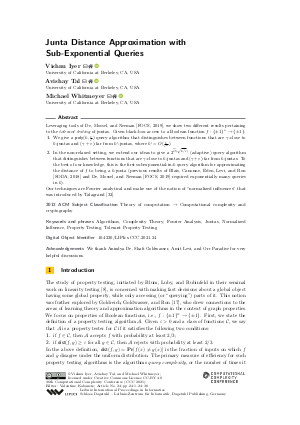LIPIcs.CCC.2021.24.pdf
- Filesize: 1.14 MB
- 38 pages

 Creative Commons Attribution 4.0 International license
Creative Commons Attribution 4.0 International license






























Feedback for Dagstuhl Publishing